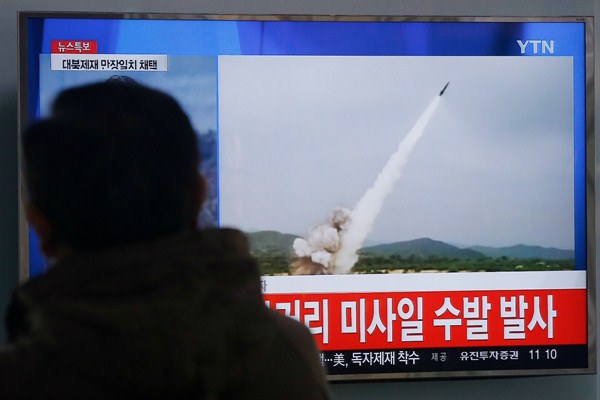North Korea’s recent provocations—a nuclear test in January and a missile test, under the guise of a peaceful satellite launch, a month later—have pressed the United States, along with its key regional allies, South Korea and Japan, into recalibrating Washington’s failed policy of so-called strategic patience with Pyongyang. Concerns about North Korea’s aggressive behavior coupled with ineffective responses thus far have prompted Washington, Seoul and Tokyo to stress that there can be no more maintenance of the status-quo when it comes to deterrence.
In addition to seeking new and more-robust sanctions at the United Nations Security Council, one of the most talked-about options for tightening the screws on the North is the potential deployment of the U.S. Terminal High Altitude Area Defense (THAAD) advanced anti-missile shield to South Korea. Proponents of the THAAD system argue that the current anti-missile capacity from South Korean and U.S. forces in the region is insufficient to meet the evolving challenges posed by the North’s arsenal of short- and medium-range missiles. Currently, the U.S. forces in South Korea are limited to Patriot Advanced Capability (PAC) batteries, which only target missiles during their final descent and lack THAAD’s ability to intercept missiles at a higher altitude. Critics of THAAD’s potential impact note that, despite its enhanced capabilities, it would likely be unable to fend off a massive attack from the North, which has the ability to deploy 1,000 short- and medium-range missiles simultaneously.
After the latest round of provocations from Pyongyang, the U.S. and South Korea agreed last month to commence consultations on deploying THAAD to protect Seoul against these missile threats. Then, last Friday, long-delayed talks finally started in Seoul. The THAAD deployment has been debated for years now and has been routinely raised after North Korean provocations. Aside from concerns about THAAD’s operational effectiveness, there are also key geostrategic concerns in the region.

